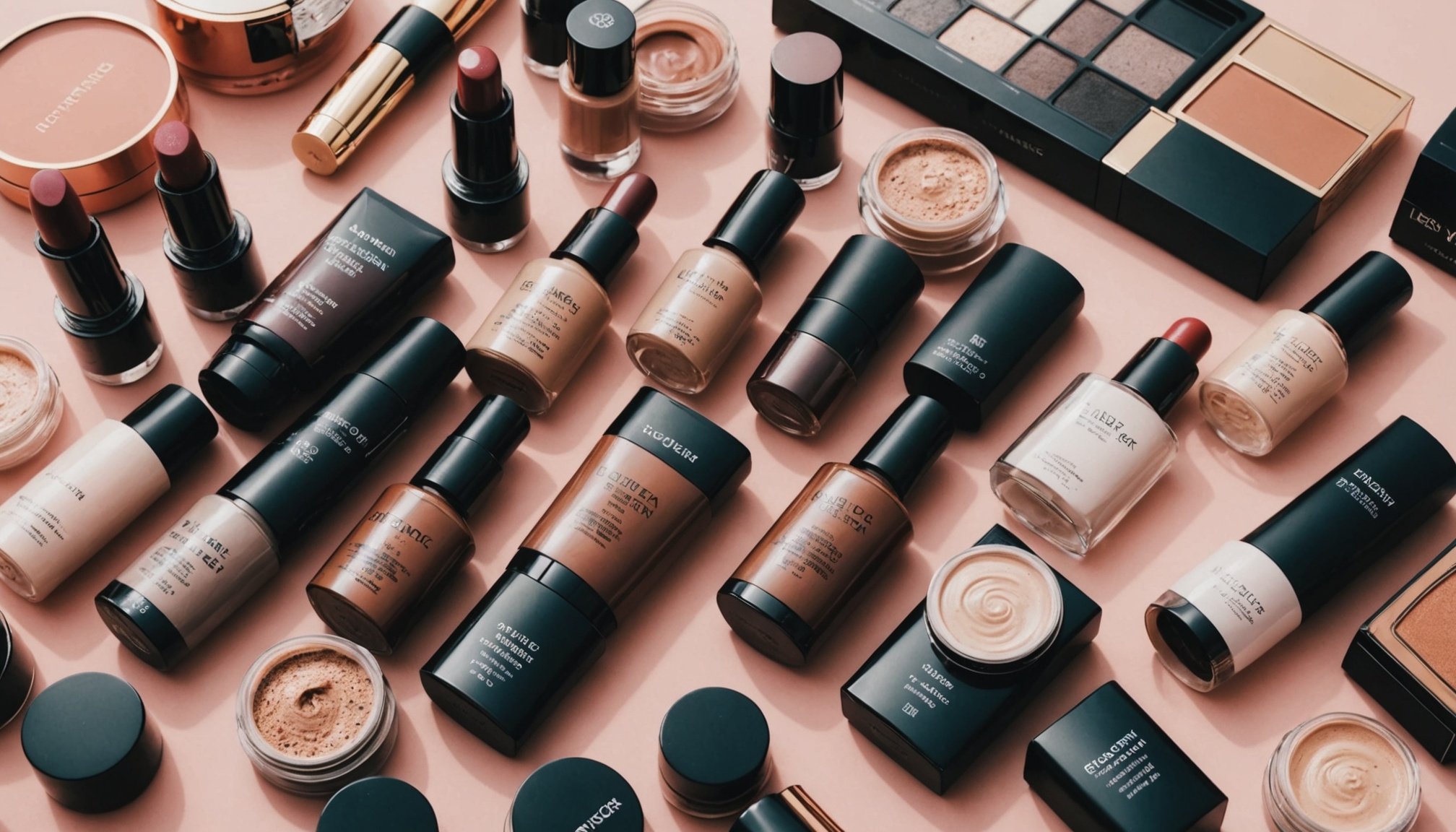Overview of Influencer Marketing in the UK Beauty Industry
Influencer marketing, particularly within the UK beauty industry, has emerged as a significant strategy for brands. At its core, it involves collaboration between beauty brands and individuals with substantial online followings, who promote products to potential consumers. This form of marketing leverages trust and authenticity to influence purchasing decisions, offering a more personal connection compared to traditional advertising.
Recent statistics reveal its growing effectiveness. According to industry reports, 89% of UK marketers find it more impactful for enhancing brand authenticity and reaching targeted demographics than conventional methods. Moreover, the return on investment (ROI) for campaigns involving influencers can surpass traditional digital marketing by up to 11 times, underscoring its financial appeal.
In the same genre : Transforming School Admin: Harnessing AI for Unmatched Efficiency in UK Education Systems
The UK beauty market is a vibrant and competitive landscape. With an estimated market value of over £15 billion, the industry is poised for continuous growth, driven partly by digital innovations and shifting consumer preferences towards inclusivity and sustainability. Influencer marketing plays a crucial role in these dynamics, enabling brands to quickly adapt to rapidly changing trends and consumer demands.
For UK beauty brands, maintaining a robust influencer marketing strategy is essential to thriving and effectively engaging their audience in a crowded market.
In parallel : Maximizing Profits: Top Subscription Model Tactics for UK Fitness Brands
Key Benefits of Influencer Marketing for Beauty Brands
Influencer marketing is transforming how beauty brands achieve elevated brand visibility. One of the primary benefits is the increased brand awareness and reach these collaborations offer. Influencers, with their dedicated following, serve as amplifiers, broadcasting products to engaged audiences. This symbiotic relationship boosts the visibility of a beauty brand, often reaching consumers who might not have discovered the brand through traditional advertising methods.
Another significant advantage is the enhancement of consumer trust. Influencers have built a rapport with their audience, cultivating trust and authenticity. When an influencer recommends a product, their followers often perceive it as a credible endorsement, fostering trust in the product beyond conventional advertisements. This authenticity is invaluable for beauty brands aiming to convey product efficacy and desirability.
Additionally, there’s a noticeable spike in engagement and promotion opportunities. Beauty brands can leverage influencers to create compelling content that garners higher engagement rates. Whether it’s a tutorial, a review video, or a simple product demonstration, these activities encourage followers to interact, comment, and share, expanding promotional reach. The dynamic blend of trust, visibility, and engagement offered by influencer marketing makes it a potent tool in the beauty industry’s competitive landscape.
Identifying the Right Influencers for Your Brand
Choosing the right influencers is crucial for your brand’s success. When selecting influencers, consider three main factors: niche, following, and engagement. Niche relates to the specific area or industry the influencer is involved in, and it should align with your brand’s domain for effective synergy. A large following does not always guarantee success. Instead, focus on engagement rates, which reveal how actively an influencer interacts with their audience. A high engagement rate typically indicates a loyal and responsive follower base.
Equally important is the alignment of brand values with the influencer’s ethos. Before partnering, ensure the influencer’s core values mirror those of your brand. This alignment fosters authenticity and strengthens the connection with your target audience. Mismatched values can lead to credibility issues and dilute your messaging.
When analyzing influencer audiences, delve beyond superficial metrics. Investigate demographic details such as age, location, and interests to ensure the influencer’s audience matches your target market. Tools like social media insights can provide valuable data about an influencer’s audience profile and preferences.
By prioritizing brand alignment and understanding audience dynamics, you establish meaningful partnerships with influencers, enhancing your brand’s reach and resonance.
Effective Platforms for Influencer Marketing in Beauty
When it comes to influencer marketing, choosing the right social media platforms is crucial for success in the beauty industry. With the growing influence of Instagram, TikTok, and YouTube, these platforms have emerged as top choices for beauty brands.
Instagram Strategies
Instagram is a powerhouse for visual content, making it ideal for beauty influencers and brands. Items like tutorials and product showcases perform exceptionally well. To maximise reach, influencers often:
- Utilise Stories to share real-time experiences or product applications.
- Use Reels to create engaging, short-form content tapping into trending topics.
- Collaborate with other influencers to expand their audience reach.
TikTok Trends
TikTok has become a trendsetter in beauty with its viral challenges and innovative content. To thrive on TikTok, beauty influencers focus on:
- Leveraging trending sounds and hashtags.
- Creating humorous or relatable short clips.
- Engaging with their audience through comments and direct interactions.
YouTube Influence
For in-depth reviews and tutorials, YouTube remains unbeatable. Influencers often create:
- Detailed tutorials that provide step-by-step guidance.
- Long-form content that delves deep into beauty routines.
- Success is often found through consistent posting and collaboration with other YouTubers.
Brands exploring social media should tailor their strategies to each platform’s unique strengths. By understanding and implementing these strategies, beauty brands can enhance their reach and engagement.
Measuring the Impact of Influencer Partnerships
Understanding the Metrics for Success in influencer partnerships is crucial to evaluate their effectiveness. When tracking campaigns, focus on Key Performance Indicators (KPIs) such as engagement rate, reach, and conversion rate. These metrics provide a comprehensive view of how well an influencer campaign performs.
To measure the return on investment (ROI), incorporate Analytics tools like Google Analytics, which can track website traffic and conversions originating from influencer efforts. Social media platforms also offer embedded insights, helping brands assess the impact directly within the platforms.
For a detailed look at examples, consider successful brands that highlight their approaches. One notable case involved a company utilizing a blend of sales tracking and social engagement metrics through a unique hashtag. This method enabled them to connect increased sales directly to specific influencer activities.
It’s important to employ a combination of methods when assessing both the engagement and the sales impact brought by influencers. Monitoring website visits, purchase completions, and user interactions with campaign content provides a multifaceted view.
For businesses seeking to enhance their influencer strategies, focusing on these KPIs and employing robust analytics will provide insights necessary for continuous improvement and strategic investment. By closely following these methods, businesses can achieve a more precise understanding of their campaign’s impact on their overall success.
Trends in the UK Beauty Influencer Marketing Space
The UK beauty industry is witnessing dynamic shifts in its approach to influencer marketing. One significant trend is the emphasis on emerging influencer selection strategies. Brands are increasingly collaborating with micro-influencers, who, despite their smaller follower base, offer high engagement and authentic connections with niche audiences. The appeal lies in their relatability and ability to foster trust, making them crucial for targeted marketing.
Conversely, macro-influencers continue to be pivotal for mass outreach, thanks to their expansive reach and established credibility. However, the challenge for brands lies in balancing investment between micro and macro influencers for optimal marketing innovation.
Influencer tactics are evolving with brands encouraging genuine content co-creation. This includes behind-the-scenes glimpses and unfiltered product trials, catering to a growing demand for transparency. Brands are utilizing data analytics to precisely identify influencers whose aesthetics align with their message, thus ensuring campaigns resonate with intended audiences.
Looking forward, the integration of socially conscious messaging is predicted to dominate future trends in beauty influencer marketing. As consumer awareness grows, influencers who advocate sustainability and inclusivity are likely to gain prominence. Adopting these ethically aligned industry trends can significantly enhance brand loyalty and outreach in the beauty innovations landscape.
Tips for Creating Successful Influencer Campaigns
Crafting successful influencer campaigns requires strategic planning and precise execution. Here’s how to elevate your campaign strategies and ensure fruitful collaborations with influencers.
Begin by developing a cohesive influencer marketing strategy. This involves setting clear objectives, identifying the target audience, and selecting the right influencers whose followers align with your brand values. Recognise influencers who have authentic engagements with their audience; this can significantly impact the campaign’s reach and effectiveness.
Crafting authentic messages is crucial. Messages that resonate with both the influencers’ followers and your brand are vital. Collaborate closely with your influencers, allowing them to communicate in their unique voice. This authenticity fosters trust and boosts the reception of promotional content.
Maintaining ongoing relationships with influencers is essential for long-term success. Influencer collaborations aren’t just about single campaigns. Cultivating partnerships leads to sustained engagement and opens opportunities for future campaigns. Provide influencers with regular updates and engage them in feedback loops to continually refine strategies.
To summarise, a robust influencer marketing strategy, authentic messaging, and long-term relationships form the foundation of successful influencer collaborations. These best practices can enhance your brand’s visibility and foster a genuine connection with a broader audience.











